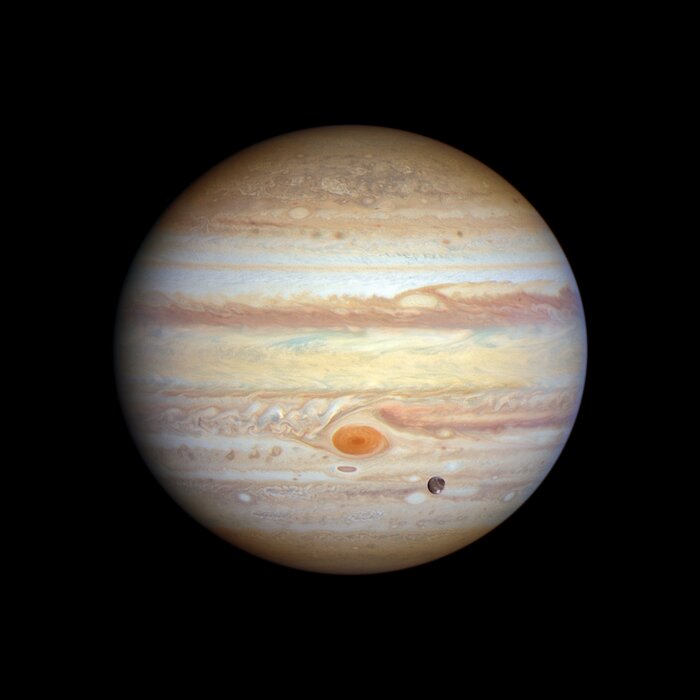Jupiter (January 2023)
Jupiter’s legendary Great Red Spot takes centre stage in this view. Though this vortex is big enough to swallow Earth, it has actually shrunk to the smallest size it has ever been according to observation records dating back 150 years. Jupiter’s icy moon Ganymede can be seen transiting the giant planet at lower right. Slightly larger than the planet Mercury, Ganymede is the largest moon in the Solar System. It is a cratered world and has a mainly water-ice surface with apparent glacial flows driven by internal heat. This image was taken on 6 January 2023.
[Image description: Jupiter looms large in this image. Set against a black background, the planet is banded in stripes of brownish orange, light gray, soft yellow, and shades of cream. White and cream colored ovals punctuate the planet at all latitudes. The icy moon Ganymede appears as a gray, mottled orb crossing the face of Jupiter.]
Credit:NASA, ESA, STScI, A. Simon (NASA-GSFC), M. H. Wong (UC Berkeley), J. DePasquale (STScI)
About the Image
| Id: | heic2303e |
|---|---|
| Type: | Planetary |
| Release date: | 23 March 2023, 15:00 |
| Related releases: | heic2303 |
| Size: | 1412 x 1412 px |
About the Object
| Category: | Solar System |
|---|
Wallpapers
Colours & filters
| Band | Wavelength | Telescope |
|---|---|---|
| Optical Ca II | 395 nm |
Hubble Space Telescope
WFC3 |
| Optical O III | 502 nm |
Hubble Space Telescope
WFC3 |
| Optical O I | 631 nm |
Hubble Space Telescope
WFC3 |
